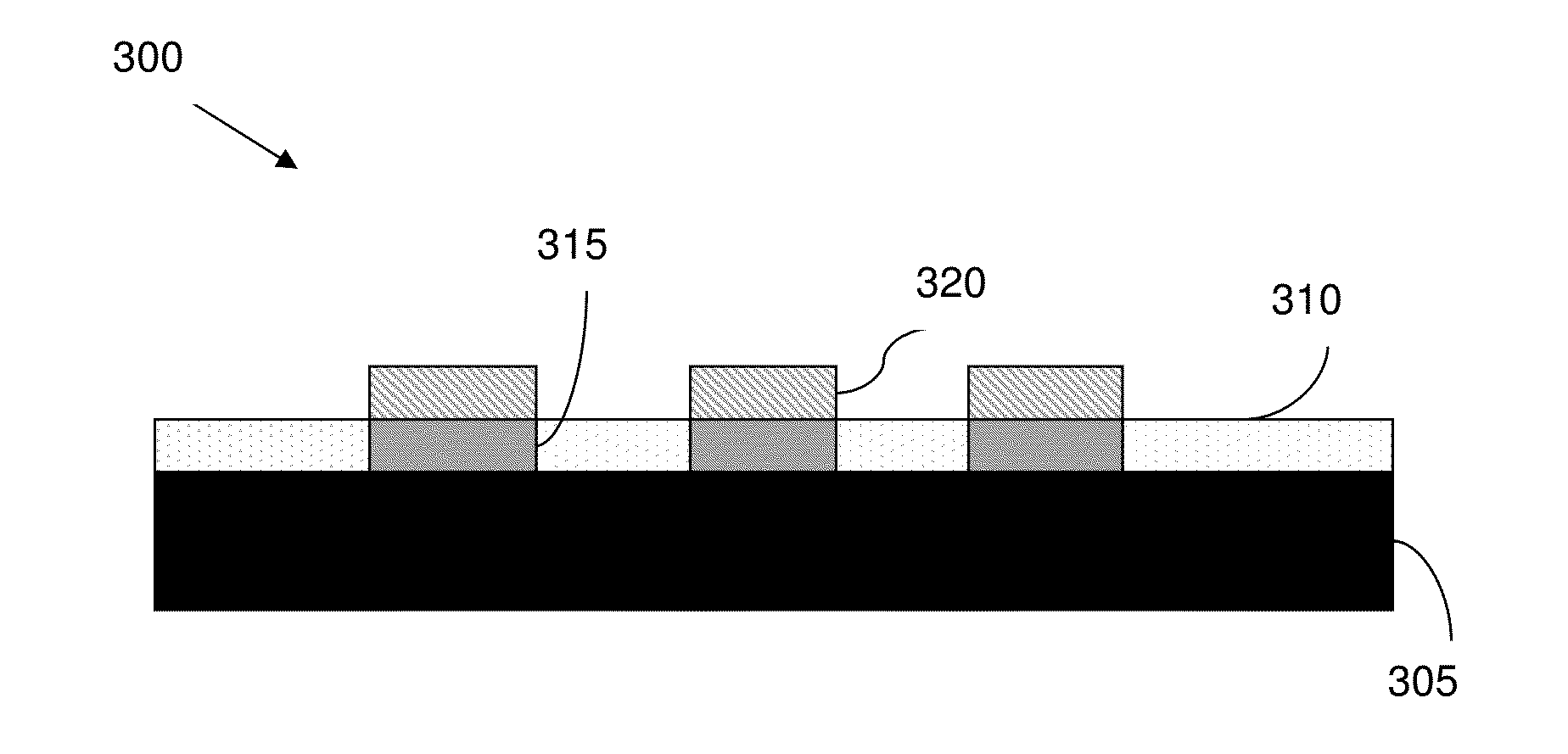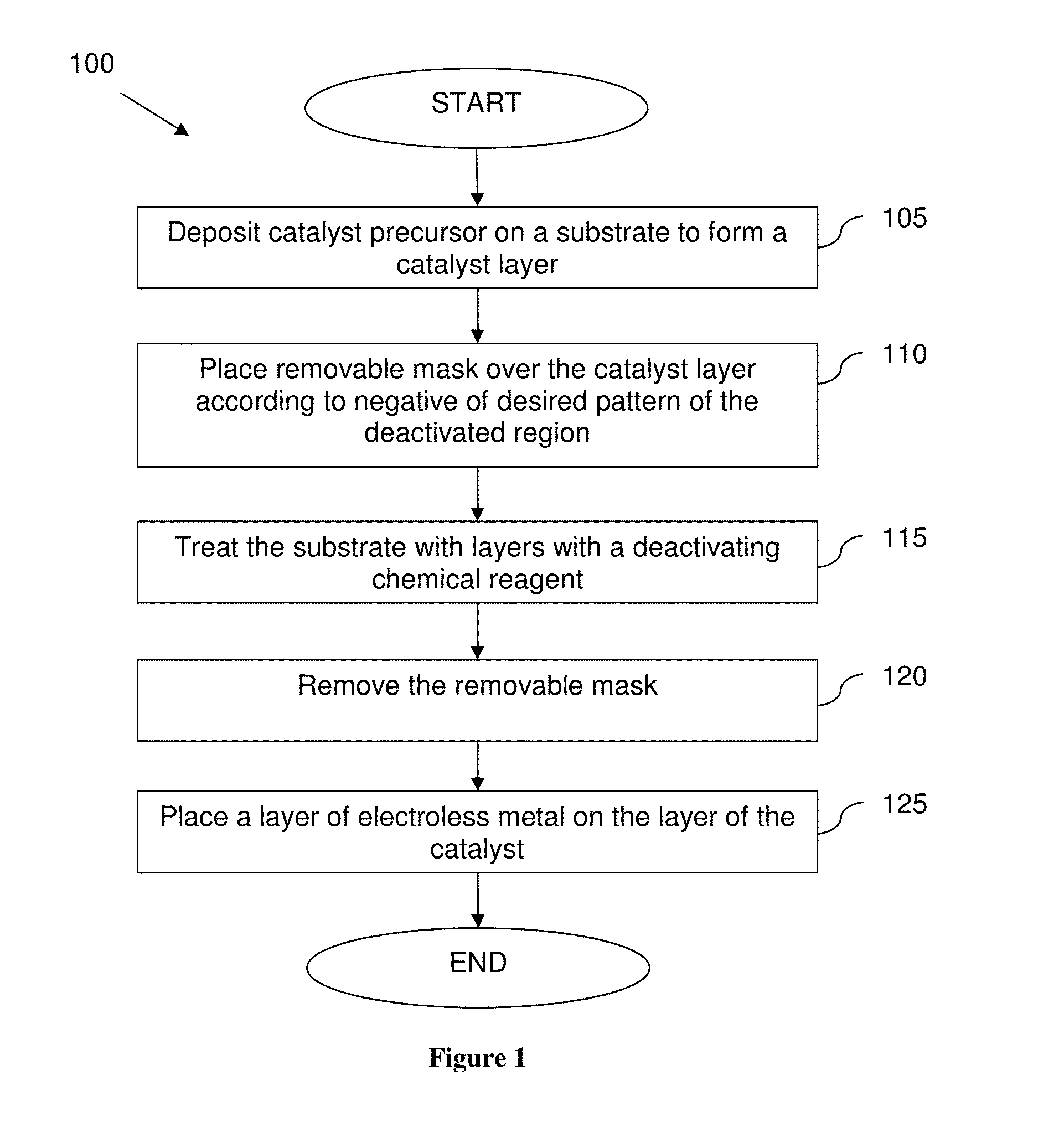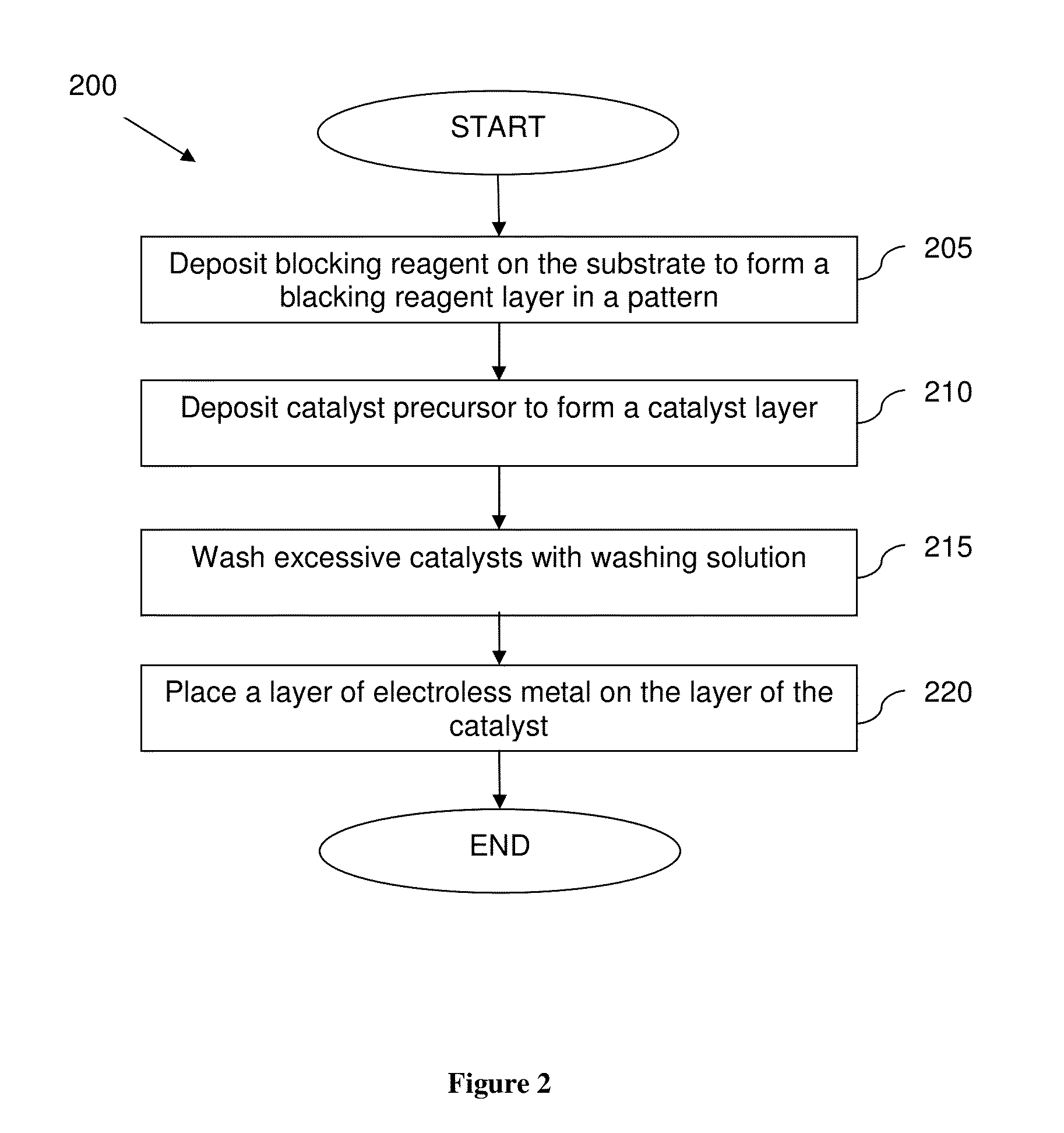Patterning of electroless metals by selective deactivation of catalysts
a technology of electroless metals and catalysts, applied in the direction of superimposed coating process, resistive material coating, liquid/solution decomposition chemical coating, etc., can solve the problems of increasing the complexity and cost of fabrication, the method is expensive, and the method may not be used effectively for catalysts
- Summary
- Abstract
- Description
- Claims
- Application Information
AI Technical Summary
Benefits of technology
Problems solved by technology
Method used
Image
Examples
examples
[0054]We have successfully used palladium (II) propionate and its complexes to deposit active palladium on substrates for electroless copper deposition. The field coated active palladium layer can be selectively deactivated by using sulfur compounds such as yellow ammonium sulfide or potassium polysulfide, etc. Selective patterning can be performed by masking the active layer of palladium deposited on a substrate by using masking agents that are benign to active palladium. The areas having unmasked palladium layer can be exposed to a solution of potassium polysulfide or yellow ammonium sulfide which deactivate the catalytic palladium. The benign masking agents can now be removed to expose active palladium followed by electroless metal deposition to form a pattern of the electrolessly deposited metal on the substrate.
[0055]Alternatively, metalized patterns for printed circuit boards can be created with methods include (1) using photolithographic imaging combined with subtractive etch...
example i
[0057]A substrate (e.g., a coupon) of 1 mil-thick polyimide was coated with a solution of amyl acetate containing 3000 ppm of palladium as palladium (II) propionate-cyclopentylamine complex as described in U.S. Pat. No. 8,110,254, which is incorporated in its entity by reference herein, and then heated to 300° C. for 10 minutes. A part of the substrate was dipped in an aqueous solution of potassium polysulfide (3000 ppm) for 1 minute. The substrate was then washed with deionized (DI) water and immersed in a commercial electroless copper solution M-22 supplied by MacDermid, Inc. The part of the substrate that was dipped in the solution of potassium polysulfide did not get deposition of electroless copper as shown in the FIG. 4.
example ii
[0058]A substrate (e.g., a coupon) of 1 mil-thick polyimide was coated with a solution of amyl acetate containing 3000 ppm of palladium as palladium (II) propionate-cyclopentylamine complex as described in U.S. Pat. No. 8,110,254, which is incorporated in its entity by reference herein, and then heated to 300° C. for 10 minutes. 5% Sb2S5 in Dimethyl sulfoxide (DMSO) heated to 160-180° C. and placed a palladium coated polyimide substrate (prepared as previously described) in the solution for 5-7 min. A similar substrate with palladium used as a control without a treatment with Sb2S5. The substrate without Sb2S5 could be plated with electroless copper while the Sb2S5 treated substrate could not be plated with electroless copper.
PUM
| Property | Measurement | Unit |
|---|---|---|
| temperature | aaaaa | aaaaa |
| temperature | aaaaa | aaaaa |
| thickness | aaaaa | aaaaa |
Abstract
Description
Claims
Application Information
 Login to View More
Login to View More - R&D
- Intellectual Property
- Life Sciences
- Materials
- Tech Scout
- Unparalleled Data Quality
- Higher Quality Content
- 60% Fewer Hallucinations
Browse by: Latest US Patents, China's latest patents, Technical Efficacy Thesaurus, Application Domain, Technology Topic, Popular Technical Reports.
© 2025 PatSnap. All rights reserved.Legal|Privacy policy|Modern Slavery Act Transparency Statement|Sitemap|About US| Contact US: help@patsnap.com



